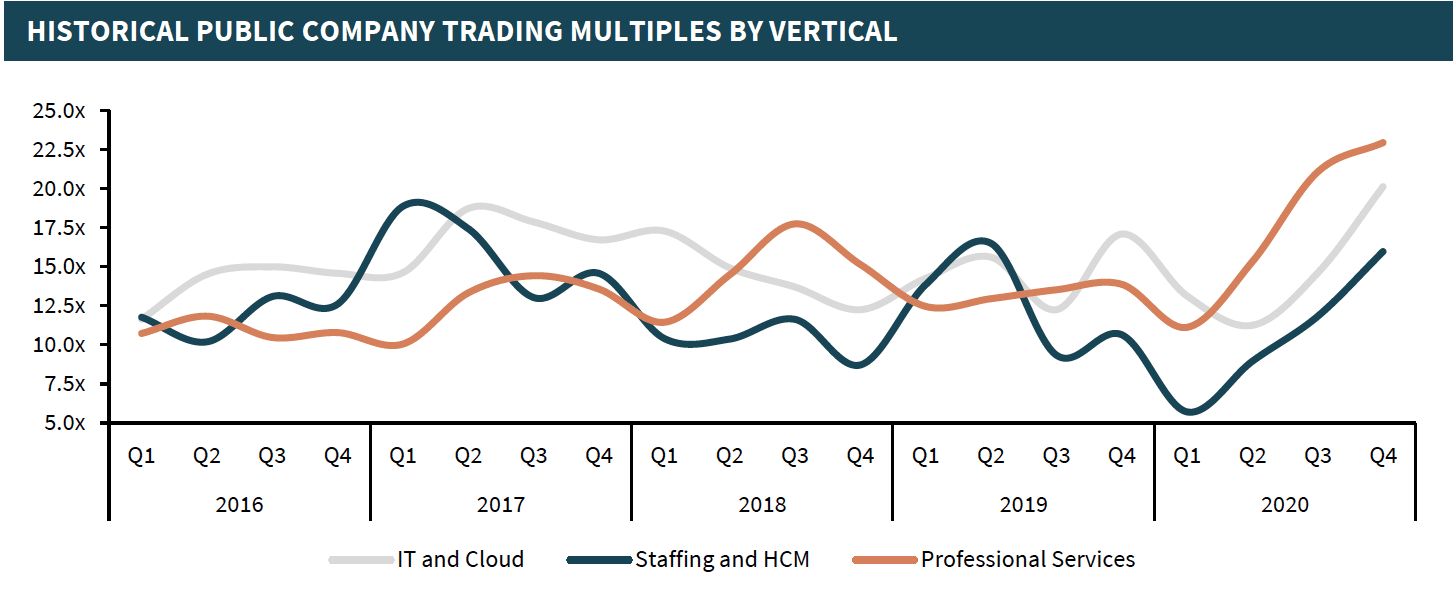What Is A Trading Multiple?
A trading multiple, also known as a valuation multiple, is a financial ratio used to value a company or its stock. It compares the market price of a security to various financial metrics, such as earnings, sales, book value, cash flow, or growth. Trading multiples are widely used by investors, analysts, and financial professionals to assess the relative value of a company and make investment decisions.
Trading multiples provide a straightforward way to measure a company’s value. By comparing the market price of a security to a relevant financial metric, investors can evaluate whether the stock is trading at a premium or discount compared to its peers or the industry average.
These valuation metrics can be helpful in identifying undervalued or overvalued stocks. If a stock has a lower trading multiple compared to its peers but has strong financial fundamentals, it may represent an attractive investment opportunity.
However, trading multiples should not be the sole determinant of an investment decision. They should be used in conjunction with other fundamental and qualitative analysis to gain a comprehensive understanding of a company’s financial health and its prospects.
Overall, trading multiples play a crucial role in the investment decision-making process. They provide a quick and comparative way to assess a company’s valuation, allowing investors to make informed decisions based on key financial metrics.
Definition of Trading Multiples
Trading multiples, also known as valuation multiples or multiples, are financial ratios used to assess the value of a company or its stock. They compare the market price of a security to various financial metrics, such as earnings, sales, book value, cash flow, or growth metrics.
These multiples provide a quantitative measure of how the market values a company relative to specific financial indicators. By comparing a company’s trading multiples to those of its peers or industry averages, investors can determine whether a stock is overvalued or undervalued.
For example, the price-to-earnings (P/E) ratio is a commonly used trading multiple that compares a company’s stock price to its earnings per share. A low P/E ratio suggests the stock is undervalued, while a high P/E ratio indicates the stock may be overvalued.
Other trading multiples include the price-to-sales (P/S) ratio, price-to-book (P/B) ratio, price-to-cash flow (P/CF) ratio, and price-to-earnings growth (PEG) ratio. Each of these ratios gives investors insights into different aspects of a company’s financial performance and can help in assessing its attractiveness as an investment.
It’s important to note that trading multiples should not be used in isolation. They should be considered alongside other fundamental analysis, such as company profitability, industry trends, and management quality. Further, the choice of trading multiple may vary depending on the industry and company characteristics.
By using trading multiples, investors can gain a clearer understanding of whether a stock is overvalued or undervalued. This assessment can guide investment decisions and support the creation of a diversified and well-balanced portfolio.
Key Uses of Trading Multiples
Trading multiples are versatile tools that serve various purposes in financial analysis and decision-making. Here are some key uses of trading multiples:
- Valuation: One of the primary uses of trading multiples is valuation. By comparing a company’s trading multiple to its industry peers or historical data, investors can assess whether the stock is overvalued or undervalued. This information can aid in determining the fair value of a company and guide investment decisions.
- Comparative Analysis: Trading multiples allow for easy comparison between companies operating in the same industry. By analyzing the multiples of various companies, investors can identify relative strengths and weaknesses and assess which companies might be good investment opportunities.
- Investment Screening: Trading multiples can be used as a screening tool to narrow down investment options. Investors can set specific criteria for trading multiples and use them to filter out stocks that do not meet their requirements, saving time and effort in the research process.
- Identifying Growth Opportunities: Trading multiples that incorporate growth metrics, such as the price-to-earnings growth (PEG) ratio, can help identify companies with strong growth potential. A lower PEG ratio indicates that the market is not fully pricing in the company’s growth prospects, making it an attractive investment opportunity.
- Identifying Undervalued Stocks: Trading multiples, such as the price-to-book (P/B) ratio or price-to-sales (P/S) ratio, can uncover stocks that are trading at a discount to their book value or sales. These multiples can highlight potential investment opportunities in undervalued companies.
- Investor Decision-Making: Trading multiples provide investors with insights into a company’s financial performance, allowing them to make more informed investment decisions. They can help investors assess the risk and return potential associated with a particular stock, improving decision-making accuracy.
Overall, trading multiples offer valuable insights into a company’s valuation and performance relative to its peers. They are versatile tools that can guide investors in various aspects of financial analysis and decision-making.
Types of Trading Multiples
Trading multiples can be categorized into various types, each focusing on different financial metrics and providing unique insights into a company’s valuation. Here are some of the most commonly used types of trading multiples:
- Price-to-Earnings (P/E) Ratio: The P/E ratio measures the price of a company’s stock relative to its earnings per share. It indicates how much investors are willing to pay for each dollar of earnings generated by the company. A higher P/E ratio usually indicates that investors have high expectations for future earnings growth.
- Price-to-Sales (P/S) Ratio: The P/S ratio compares a company’s market capitalization (stock price multiplied by shares outstanding) to its total revenue. This ratio provides insight into how much investors are willing to pay for each dollar of the company’s sales. A lower P/S ratio may suggest an undervalued stock.
- Price-to-Book (P/B) Ratio: The P/B ratio compares a company’s market price per share to its book value per share. Book value represents the company’s net assets (total assets minus total liabilities). A lower P/B ratio may indicate that the stock is undervalued compared to its book value.
- Price-to-Cash Flow (P/CF) Ratio: The P/CF ratio compares a company’s market capitalization to its operating cash flow per share. It provides insight into how much investors are willing to pay for each dollar of the company’s cash flow. A lower P/CF ratio may suggest an undervalued stock.
- Price-to-Earnings Growth (PEG) Ratio: The PEG ratio measures a company’s P/E ratio relative to its earnings growth rate. It helps investors assess how the stock is valued considering its expected earnings growth. A PEG ratio below 1 may indicate that the stock is undervalued relative to its growth prospects.
These trading multiples provide investors with a range of perspectives on a company’s valuation. Each of these ratios focuses on different financial metrics, allowing for a comprehensive assessment of a company’s value. It is worth noting that the choice of trading multiple may vary depending on the industry and company-specific factors.
By understanding the different types of trading multiples and their implications, investors can use these ratios to evaluate a company’s financial performance and make informed investment decisions.
Price-to-Earnings (P/E) Ratio
The price-to-earnings (P/E) ratio is one of the most widely used trading multiples in finance. It measures the price of a company’s stock relative to its earnings per share (EPS). By analyzing the P/E ratio, investors can gain insights into the market’s perception of a company’s growth potential and profitability.
The formula to calculate the P/E ratio is:
P/E Ratio = Stock Price / Earnings Per Share
A high P/E ratio suggests that investors have high expectations for the company’s future earnings growth, while a low P/E ratio may indicate low market expectations or undervaluation.
There are two types of P/E ratios: trailing P/E and forward P/E. Trailing P/E is computed using historic earnings over the past 12 months, while forward P/E uses projected future earnings.
Investors often compare a company’s P/E ratio to its industry peers or historical data to assess its relative valuation. A company with a higher P/E ratio than its competitors may indicate that the market has higher expectations for its future growth. On the other hand, a lower P/E ratio might suggest that the company is undervalued or facing challenges.
It is important to consider other factors in conjunction with the P/E ratio. While a high P/E ratio can indicate positive market sentiment, it may also mean that the stock is overpriced or experiencing a speculative bubble. Likewise, a low P/E ratio could indicate a value investment opportunity, but it could also be a result of poor market confidence or declining earnings.
The P/E ratio can vary significantly across industries due to differing growth prospects and risk profiles. For instance, technology companies with high growth expectations tend to have higher P/E ratios, while mature industries with stable cash flows might have lower P/E ratios.
In summary, the price-to-earnings (P/E) ratio provides a snapshot of how much investors are willing to pay for each dollar of a company’s earnings. It is a popular trading multiple that helps investors evaluate a company’s market perception, compare valuation to industry peers, and identify potential overvalued or undervalued stocks. However, it should be used in conjunction with other financial metrics and thorough analysis to make well-informed investment decisions.
Price-to-Sales (P/S) Ratio
The price-to-sales (P/S) ratio is a valuation metric used to assess a company’s market value relative to its total revenue. This trading multiple compares a company’s market capitalization (stock price multiplied by shares outstanding) to its total revenue or sales.
The formula to calculate the P/S ratio is:
P/S Ratio = Market Capitalization / Total Revenue
The P/S ratio provides insight into how much investors are willing to pay for each dollar of a company’s sales. It is particularly useful for companies that have yet to generate consistent profits or have volatile earnings. Unlike the price-to-earnings (P/E) ratio, the P/S ratio focuses solely on revenue rather than earnings.
A high P/S ratio suggests that investors have high expectations for future revenue growth, believing the company has strong sales potential. Conversely, a low P/S ratio may indicate undervaluation or suggest that the market has less confidence in the company’s future prospects.
Comparable analysis is often used when interpreting the P/S ratio. By comparing a company’s P/S ratio to its industry peers, investors can assess whether the stock is trading at a premium or a discount relative to the industry average. This analysis helps investors identify potential investment opportunities or overvalued stocks.
It’s important to consider other factors alongside the P/S ratio. While a low P/S ratio might indicate an undervalued stock, it could also be a sign of poor growth prospects or declining sales. Conversely, a high P/S ratio might imply strong growth potential, but it could also suggest an overly optimistic market sentiment or unrealistic revenue expectations.
The P/S ratio is particularly relevant for companies in sectors such as technology, where profitability may not be the primary focus. It can also be useful for early-stage companies that are not yet profitable and rely on revenue generation as a key performance indicator.
However, it’s essential to use the P/S ratio in conjunction with other financial metrics and analysis. In combination with profitability measures like the P/E ratio or other valuation ratios, the P/S ratio can help investors assess a company’s overall financial health and market valuation.
In summary, the price-to-sales (P/S) ratio provides investors with a measure of a company’s market value relative to its revenue. It helps assess the market’s perception of a company’s sales potential and can be useful for companies with volatile earnings or those in the early stages of profitability. However, as with any trading multiple, it is crucial to consider other financial metrics and industry factors when making investment decisions.
Price-to-Book (P/B) Ratio
The price-to-book (P/B) ratio is a valuation metric used to evaluate a company’s market value relative to its book value. It compares a company’s stock price per share to its book value per share, which represents the difference between a company’s total assets and liabilities.
The formula to calculate the P/B ratio is:
P/B Ratio = Stock Price / Book Value Per Share
The P/B ratio provides investors with insights into how the market values a company’s net assets. A high P/B ratio suggests that the market is willing to pay a premium for each dollar of the company’s net assets, indicating positive market sentiment or the expectation of future growth. Conversely, a low P/B ratio may indicate that the market perceives the company as undervalued or having weak growth prospects.
When comparing the P/B ratio, investors often look at industry peers or historical data to assess whether a stock is trading at a premium or discount relative to its sector or the market as a whole. A company with a higher P/B ratio than its industry peers may indicate stronger fundamentals or market confidence in its long-term prospects.
It’s important to note that the P/B ratio has limitations. It does not consider a company’s future earnings potential or its ability to generate profit. The P/B ratio is more suitable for asset-heavy industries, such as banking or real estate, where asset value plays a significant role in valuation.
While a low P/B ratio might suggest an undervalued stock, it’s essential to conduct further analysis to assess the company’s financial health, profitability, and growth prospects. Companies with low P/B ratios may have underlying issues that the market has priced into their valuations.
Additionally, intangible assets, such as patents, brand value, or intellectual property, can significantly impact a company’s value beyond its book value. In such cases, the P/B ratio may not provide a complete picture of the company’s true worth.
The P/B ratio is especially helpful in identifying value stocks, where the market value of a stock is lower than its book value, potentially indicating an investment opportunity. However, it should be used in conjunction with other financial metrics and analysis to make informed investment decisions.
In summary, the price-to-book (P/B) ratio offers investors a measure of a company’s market value relative to its net assets. It helps gauge market sentiment and determine if a stock is trading at a premium or discount to its book value. While the P/B ratio has its limitations, it can be a valuable tool when used alongside other financial analysis to assess a company’s valuation and investment potential.
Price-to-Cash Flow (P/CF) Ratio
The price-to-cash flow (P/CF) ratio is a valuation metric used to assess a company’s market value relative to its cash flow. It measures the relationship between a company’s market capitalization (stock price multiplied by shares outstanding) and its operating cash flow per share.
The formula to calculate the P/CF ratio is:
P/CF Ratio = Market Capitalization / Operating Cash Flow
The P/CF ratio provides insights into how much investors are willing to pay for each dollar of a company’s cash flow. It is often considered a more reliable measure of a company’s financial health compared to the price-to-earnings (P/E) ratio, as cash flow is less susceptible to manipulation and accounting practices.
Investors use the P/CF ratio to assess a company’s ability to generate cash and its potential for future growth. A lower P/CF ratio may suggest that a stock is undervalued or that the market has lower expectations for the company’s cash flow. Conversely, a higher P/CF ratio could indicate positive market sentiment or expectations of strong future cash flow.
Comparing a company’s P/CF ratio to its industry peers or historical data can help identify whether the stock is trading at a premium or discount to its sector or the overall market. However, it’s crucial to consider other factors such as profitability, capital expenditure requirements, and industry dynamics when interpreting the P/CF ratio.
It’s worth noting that the P/CF ratio can vary significantly across industries. Capital-intensive industries like manufacturing or energy may have lower P/CF ratios due to higher investment in fixed assets. Conversely, technology companies with higher growth prospects may have higher P/CF ratios, reflecting their potential for generating substantial cash flows in the future.
While the P/CF ratio is a useful valuation tool, it should be used alongside other financial metrics and qualitative analysis to make well-informed investment decisions. Investors should consider the company’s overall financial health, growth prospects, and the industry’s competitive landscape.
Furthermore, it is essential to distinguish between operating cash flow and free cash flow. Free cash flow represents the cash available to shareholders after deducting capital expenditures, and it may provide a more accurate picture of a company’s cash generation ability.
In summary, the price-to-cash flow (P/CF) ratio measures a company’s market value relative to its cash flow. It helps investors assess a company’s ability to generate cash and its valuation compared to peers. However, it should be used in conjunction with other financial metrics and analysis to gain a comprehensive understanding of a company’s financial health and investment potential.
Price-to-Earnings Growth (PEG) Ratio
The price-to-earnings growth (PEG) ratio is a valuation metric used to evaluate a company’s market value relative to its earnings growth. It measures the relationship between a company’s price-to-earnings (P/E) ratio and its earnings growth rate.
The formula to calculate the PEG ratio is:
PEG Ratio = P/E Ratio / Earnings Growth Rate
The PEG ratio provides investors with a measure of how the market values a company’s earnings growth potential. It takes into account both the company’s current valuation (P/E ratio) and its expected earnings growth rate.
A PEG ratio below 1 suggests that the stock may be undervalued relative to its earnings growth potential. This indicates that the market has not fully priced in the company’s expected growth rate. Conversely, a PEG ratio above 1 may suggest that the stock is overvalued or that the market has higher expectations for future earnings growth.
The PEG ratio combines the elements of valuation and growth prospects, allowing investors to compare companies within the same industry or across sectors. It helps identify stocks that may offer a favorable trade-off between valuation and growth potential.
It’s important to note that the PEG ratio has limitations. It relies on projected or estimated earnings growth, which can be subject to uncertainty and error. The accuracy of the PEG ratio depends on the reliability of the earnings growth estimates used in the calculation.
Additionally, the PEG ratio should be used in conjunction with other financial metrics and qualitative analysis. It does not provide a complete assessment of a company’s financial health or prospects. Factors such as industry dynamics, competitive position, and management quality should be considered when making investment decisions.
It’s worth noting that the appropriate PEG ratio varies across industries. Different sectors have different growth rates and risk profiles, which can affect investors’ expectations and valuations. Therefore, it is essential to compare a company’s PEG ratio to its industry peers and consider industry-specific factors.
Overall, the price-to-earnings growth (PEG) ratio provides a way for investors to assess a company’s valuation relative to its earnings growth potential. While it has its limitations, the PEG ratio can help investors identify stocks that may offer attractive growth opportunities at a reasonable price. However, it should be used alongside other financial metrics and analysis to make well-informed investment decisions.
Calculating Trading Multiples
Calculating trading multiples involves comparing a company’s market value to specific financial metrics. Each trading multiple has its own formula, depending on the metric used for comparison. Here are some common methods of calculating trading multiples:
- Price-to-Earnings (P/E) Ratio: The P/E ratio is calculated by dividing the market price per share by the earnings per share (EPS) of the company. The formula is: P/E Ratio = Stock Price / Earnings Per Share. The earnings per share can be obtained from a company’s financial statements or analyst estimates.
- Price-to-Sales (P/S) Ratio: To calculate the P/S ratio, divide the market capitalization of the company by its total revenue. The formula is: P/S Ratio = Market Capitalization / Total Revenue. The market capitalization is obtained by multiplying the stock price by the number of outstanding shares, while the total revenue can be found in the financial statements.
- Price-to-Book (P/B) Ratio: The P/B ratio is derived by dividing the market price per share by the book value per share of the company. The formula is: P/B Ratio = Stock Price / Book Value Per Share. The book value per share is calculated by dividing the company’s total equity by the number of outstanding shares.
- Price-to-Cash Flow (P/CF) Ratio: To calculate the P/CF ratio, divide the market capitalization by the operating cash flow per share. The formula is: P/CF Ratio = Market Capitalization / Operating Cash Flow. Operating cash flow is found in the company’s cash flow statement, and market capitalization is determined by multiplying the stock price by the number of outstanding shares.
- Price-to-Earnings Growth (PEG) Ratio: The PEG ratio is calculated by dividing the P/E ratio by the earnings growth rate. The formula is: PEG Ratio = P/E Ratio / Earnings Growth Rate. The P/E ratio is obtained using the first step mentioned above, and the earnings growth rate can be based on historical data or analyst estimates.
It’s important to note that trading multiples are just one component of the valuation process. They should be used alongside other financial metrics and qualitative analysis to gain a comprehensive understanding of a company’s financial health and investment potential.
Additionally, the accuracy of trading multiples relies on the quality and reliability of the data used in the calculations. Investors should ensure they have access to accurate and up-to-date financial information when calculating trading multiples.
By understanding the formulas and calculations involved in trading multiples, investors can make more informed decisions based on the relative valuation of companies within an industry or the market as a whole.
Advantages of Using Trading Multiples
Using trading multiples offers several advantages to investors and analysts in the evaluation of companies. Here are some key benefits of using trading multiples:
- Comparability: Trading multiples provide a standardized and comparable method of assessing the relative value of companies within the same industry or sector. By comparing multiples across companies, investors can gain insights into which stocks may be overvalued or undervalued in relation to their peers.
- Efficiency: Trading multiples provide a quick and efficient way to evaluate a company’s valuation. They are simple to calculate, making them accessible to a wide range of investors and analysts. This efficiency allows for faster analysis and decision-making, particularly when time is a critical factor.
- Snapshot of Valuation: Trading multiples provide a snapshot of the market’s perception of a company’s value at a given point in time. They indicate how much investors are willing to pay for a company’s financial performance, growth prospects, and other relevant metrics. This information can guide investment decisions by highlighting potential overvalued or undervalued stocks.
- Relative Valuation: Trading multiples allow investors to compare a company’s valuation to its industry peers or benchmarks. This relative valuation helps investors understand whether a stock is priced competitively within its sector. They can also identify potential investment opportunities by identifying companies that may be undervalued in comparison.
- Forecasting Future Performance: Trading multiples that incorporate growth metrics, such as the PEG ratio, allow investors to factor in expectations for future earnings growth. By considering both the current valuation and growth prospects, trading multiples can assist in identifying stocks with attractive potential returns.
- Informing Investment Strategies: Trading multiples can guide different investment strategies. Value investors, for example, may focus on stocks with low multiples, indicating potentially undervalued opportunities. Growth investors, on the other hand, may seek out stocks with high multiples, indicating positive market sentiment and strong growth potential.
While trading multiples offer significant advantages, it’s important to consider their limitations and use them in conjunction with other financial metrics and qualitative analysis. A comprehensive evaluation of a company’s financial health and prospects requires a holistic approach that goes beyond trading multiples alone.
Overall, trading multiples serve as valuable tools for investors and analysts in assessing company valuations, identifying investment opportunities, and making informed decisions based on relative market valuations.
Limitations of Using Trading Multiples
While trading multiples offer valuable insights into a company’s valuation, it is important to recognize their limitations. Here are some key limitations to consider when using trading multiples:
- Industry and Company Differences: Different industries and companies have unique characteristics, which can impact their trading multiples. Factors such as growth prospects, risk profiles, and capital structure can vary significantly across industries. Therefore, comparing trading multiples across industries may not provide an accurate assessment.
- Comparison Challenges: Comparing trading multiples within an industry or across companies can be challenging due to differences in financial reporting and accounting practices. Companies may use different methods to calculate earnings, book value, or cash flow, making it difficult to make meaningful comparisons based on trading multiples alone.
- Cyclical and Seasonal Effects: Trading multiples may fluctuate based on the stage of the economic cycle or seasonal variations. Industries or companies that are more sensitive to economic conditions may experience significant fluctuations in their multiples, making it challenging to rely solely on trading multiples for valuation purposes.
- Future Earnings Uncertainty: Trading multiples are based on past or projected financial metrics, which can be subject to uncertainty. Future earnings or sales growth may not be realized as expected, impacting the accuracy of the trading multiples used for valuation.
- Overreliance on Financial Metrics: Trading multiples focus primarily on financial metrics and may not capture other important factors such as market dynamics, competitive advantage, or industry trends. They provide a limited view of a company’s overall value, and relying solely on trading multiples may overlook critical qualitative aspects.
- Hidden Assets and Liabilities: Trading multiples do not consider intangible assets or liabilities that may impact a company’s value. Intangible assets like intellectual property, brand value, or customer relationships can significantly contribute to a company’s worth, but they are not fully reflected in trading multiples based on financial statements.
- Market Sentiment: Trading multiples are influenced by market sentiment and investor psychology. Market conditions, speculative activity, or other external factors can drive up or depress multiples, leading to potential mispricing or distorted valuations.
It is essential to use trading multiples as part of a broader analysis, considering qualitative factors, industry dynamics, and a company’s specific circumstances. Combining multiples with other valuation methods, such as discounted cash flow analysis or comparable company analysis, can provide a more comprehensive view of a company’s value.
Despite these limitations, trading multiples remain valuable tools in assessing relative valuations and making investment decisions. However, caution should be exercised to ensure their appropriate use and interpretation in the context of a comprehensive analysis.
Factors Influencing Trading Multiples
Several factors can influence trading multiples, affecting how the market values a company. Understanding these factors is essential in interpreting and analyzing trading multiples. Here are some key factors that influence trading multiples:
- Growth Prospects: Companies with strong growth prospects often command higher trading multiples as investors expect future earnings growth. Growth can be driven by factors such as new product launches, expansion into new markets, or innovative strategies.
- Industry Dynamics: Different industries have varying growth rates, risk profiles, and capital requirements. Industries with high growth potential, such as technology or biotech, often have higher trading multiples, reflecting expectations for future growth. In contrast, industries with mature or cyclical characteristics may have lower multiples.
- Profitability: Companies with higher profitability, demonstrated by strong profit margins and consistent earnings growth, tend to have higher trading multiples. Profitability is a key indicator of a company’s ability to generate returns for investors.
- Market Sentiment: Market sentiment and investor psychology can significantly impact trading multiples. Positive market sentiment, driven by optimism and confidence, can lead to higher multiples, while negative sentiment can result in lower multiples.
- Competitive Position: A company’s competitive position within its industry can influence its trading multiples. Companies with strong market positions, differentiated products or services, and barriers to entry often command higher multiples as investors perceive them to have a competitive advantage.
- Interest Rates and Economic Conditions: Interest rates and overall economic conditions can affect trading multiples. Lower interest rates generally lead to higher multiples as the cost of capital decreases, making investments in stocks more attractive. Economic growth and stability also contribute to positive investor sentiment and higher multiples.
- Dividend Policy: A company’s dividend policy can impact its trading multiples. Companies that pay consistent and growing dividends may attract income-focused investors, leading to higher multiples due to the perceived reliability of future cash flows.
- Management Quality: Effective and experienced management teams can positively influence trading multiples by instilling confidence in investors. A track record of successful strategic decision-making, effective capital allocation, and transparent communication can contribute to higher multiples.
It’s important to note that these factors do not act in isolation. Multiple factors interact and collectively influence trading multiples. Additionally, each industry may have unique factors that are specific to its dynamics and characteristics. Therefore, when analyzing trading multiples, it’s crucial to consider industry-specific attributes and broader market conditions.
By understanding the factors that influence trading multiples, investors can gain insights into the market’s perception of a company’s value and make more informed investment decisions.
Importance of Comparables in Trading Multiples
Comparables, also known as comparables companies or peer group analysis, play a vital role in the interpretation and analysis of trading multiples. Comparing a company’s trading multiples to those of its industry peers or benchmark companies provides important insights into its relative valuation and market positioning. Here are some key reasons highlighting the importance of comparables in trading multiples:
- Relative Valuation: Comparables allow for a relative valuation approach, which helps investors determine whether a company’s trading multiples are in line with industry standards or deviate significantly. By comparing a company’s multiples to its peers, investors can identify whether a stock is trading at a premium or discount relative to the industry average.
- Industry Benchmarks: Comparing multiples to industry benchmarks enables investors to assess a company’s performance and position within its sector. It helps investors understand the company’s growth potential, profitability, and overall financial health in comparison to similar companies within the industry.
- Identifying Outliers: Comparables assist in identifying outliers within an industry. If a company’s trading multiples significantly differ from its peers, it signals that there may be unique factors affecting its valuation. This can prompt investors to conduct further analysis to identify the reasons behind the deviation.
- Market Sentiment: Comparables provide insights into market sentiment. If a company’s multiples are consistently higher or lower than those of its peers, it indicates market sentiment towards that specific company. Understanding market sentiment can help investors gauge market expectations and adapt their investment strategies accordingly.
- Investment Opportunities: Comparables aid in identifying potential investment opportunities. If a company’s multiples are lower than its peers while having comparable financial performance, it may indicate an undervalued stock that presents an attractive investment opportunity. Conversely, if a company’s multiples are higher than its peers, it may prompt investors to investigate the reasons behind the premium valuation.
- Confirmation or Contradiction: Comparables can confirm or contradict the initial assessment of a company’s valuation based on trading multiples. If a company’s multiples are similar to its peers, it supports the initial valuation. Conversely, if the multiples differ significantly, it may require investors to reevaluate their analysis and reassess the potential valuation of the company.
Comparables provide a valuable benchmark in assessing a company’s relative valuation and financial performance. However, it is essential to select appropriate comparable companies that are similar in terms of size, business model, growth prospects, and industry dynamics. Additionally, comparables should be updated regularly to reflect changes in the industry, market conditions, and a company’s performance.
Overall, the use of comparables enhances the understanding of a company’s trading multiples, facilitates relative valuation analysis, and aids investors in making more informed investment decisions.
Interpreting Trading Multiples
Interpreting trading multiples is crucial for understanding a company’s valuation and making informed investment decisions. Proper interpretation allows investors to gain insights into a company’s financial health, growth prospects, and market positioning. Here are key factors to consider when interpreting trading multiples:
- Relative Comparison: Trading multiples should be compared to industry peers, sector averages, or historical data to gauge a company’s valuation relative to others. A company with higher multiples may indicate stronger growth prospects or market sentiment, while lower multiples could suggest undervaluation or potential risks.
- Industry Context: Different industries have varying growth rates, risk profiles, and business models. Interpreting trading multiples requires considering industry dynamics and understanding how specific factors impact valuation metrics within the industry. Industry-specific nuances can affect the interpretation and analysis of trading multiples.
- Trend Analysis: Analyzing historical trends of trading multiples can reveal patterns, cyclical fluctuations, or changes in market sentiment over time. Monitoring the changes in multiples can provide insights into a company’s evolving valuation and its alignment with the broader market trends.
- Company-Specific Factors: Company-specific factors, such as growth prospects, competitive position, and management quality, should be considered when interpreting trading multiples. A company with strong growth potential may justify higher multiples, while a company facing challenges may have lower multiples despite its historical performance.
- Comparing Multiples: Interpreting trading multiples involves a holistic analysis that considers multiple metrics simultaneously. By comparing multiple multiples (e.g., P/E ratio, P/S ratio, P/B ratio), investors can gain a more comprehensive understanding of a company’s valuation, profitability, and financial health.
- Qualitative Analysis: Trading multiples provide a quantitative measure of valuation, but qualitative factors are equally important. Factors such as brand strength, customer loyalty, intellectual property, or regulatory environment impact a company’s valuation and should be considered alongside trading multiples for a complete assessment.
- Expectations and Forward-Looking Considerations: Trading multiples reflect market expectations and future prospects. Assessing the company’s ability to meet or exceed these expectations, considering factors like industry trends, competition, and macroeconomic conditions, is important in the interpretation of trading multiples.
It’s important to remember that trading multiples provide a snapshot of a company’s valuation at a specific point in time. They should be utilized in conjunction with other financial metrics, qualitative analysis, and a comprehensive understanding of the company’s fundamentals and market dynamics.
Interpreting trading multiples requires a holistic approach that considers various factors beyond the numerical values themselves. An in-depth analysis of industry trends, company-specific factors, and market conditions is essential for accurate and effective interpretation.

























